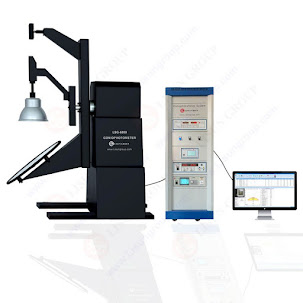What is a mirror goniophotometer used for?
.jpg)
A mirror goniophotometer is a specialized instrument that is used to measure the amount of light that is emitted by lamps, luminaires, and other types of light sources. The device works by spinning a mirror to gather light from the source, then redirecting that light onto a detector that detects the amount of light present. The instrument is able to measure the light output from a source at a variety of angles, which enables it to ascertain crucial factors such as color temperature, chromaticity coordinates, luminous intensity, and color rendering index (CRI) . In the lighting sector, mirror goniophotometers are often used to analyze and describe the performance of light sources, to compare various products, and to guarantee that light sources fulfill applicable industry standards. They may also be used to conduct tests to assess the quality of light provided by a source and to detect any faults that may hinder performance. Using a mirror goniophotometer has a number of benefits, ...
.jpg)
.jpg)
.jpg)
.jpg)
.jpg)
.jpg)
.jpg)
.jpg)
.jpg)
.jpg)
.jpg)
.jpg)